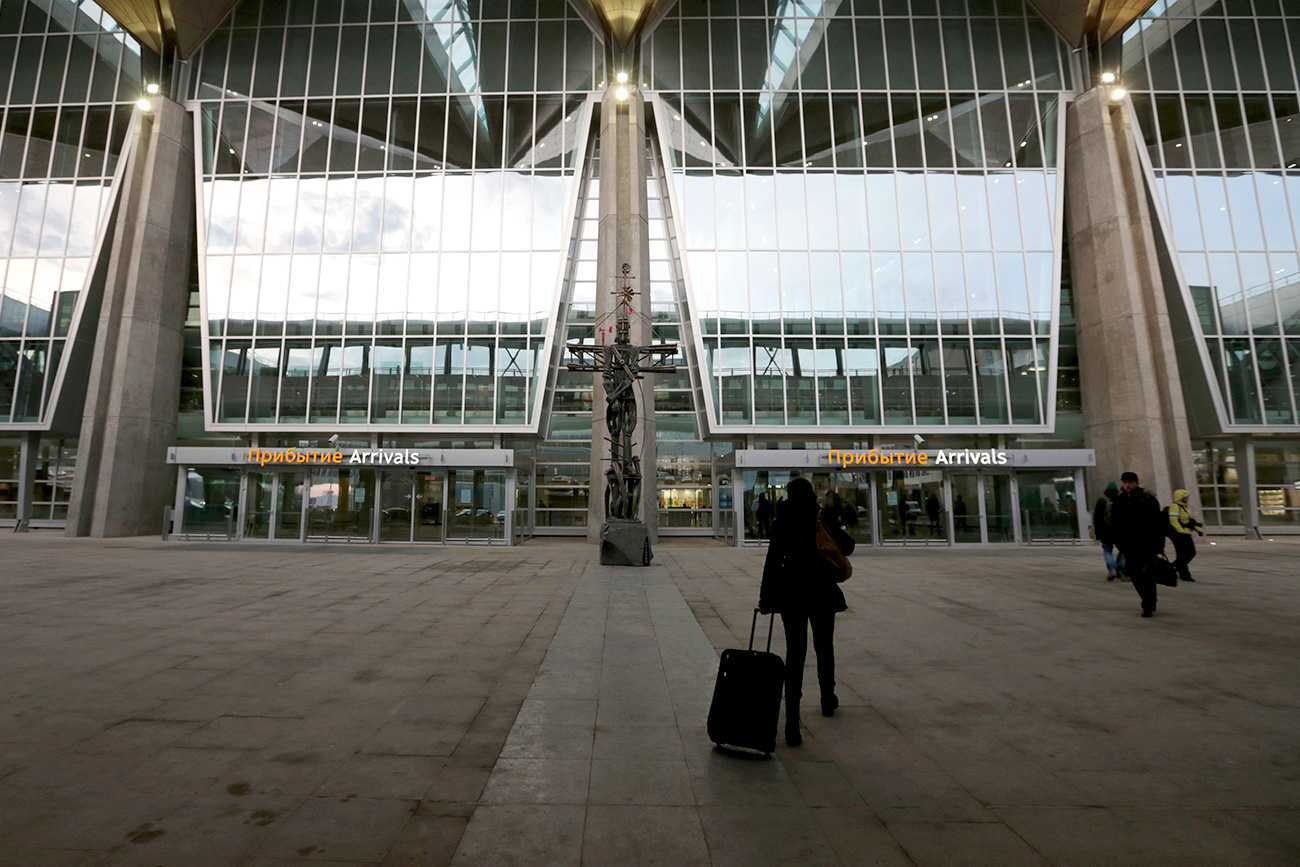
Building of the new passenger terminal of the Pulkovo airport in St. Petersburg.
Igor Russak/RIA NovostiPublic-private partnerships (PPPs) are becoming more popular in Russia. They help the government to attract private investment for the construction of infrastructure. Officials have learned to attract investment capital by using banks that are partially owned by the government, such as Vnesheconombank (VEB) and VTB Bank.
In particular, in May 2017, VEB announced that it would build a terminal for the new airport in the city of Saratov thanks to the investment of Russian-based company Esta Construction. Earlier, VTB Bank was able to attract investment from the German Fraport AG, the Greek Copelouzos and 13 other banks for the construction of a new terminal at the Pulkovo Airport in St. Petersburg.
Russian officials have found the attainment of private funds through PPPs so advantageous that the Ministry of Economic Development has decided to develop a project to greatly increase this kind of investment in the country's infrastructure, says Minister Maxim Oreshkin, who announced this at the St. Petersburg International Economic Forum at the beginning of June 2017.
"Currently VTB is working with the Ministry of Economic Development on this project and is participating in working groups," commented Oleg Pankratov, Head of Infrastructure Capital and Project Finance at VTB Bank.
The average payback period of a PPP is 10-15 years, which is rather long by any investment standard. "However, the payback period is by far not the most important factor for the investor. Profitability is much more important," Pankratov says.
Investors can guarantee the investment's profitability by selling shares in the project. This is what happened with the new terminal at the Pulkovo Airport, which opened in St. Petersburg in 2014. The airport was built with private money totaling 1.2 billion euros, which had been brought in by VTB Bank. Fraport AG bought a rather large stake in the airport (37.5 percent). This company already operates 13 international airports and, at the time, this stake was one of the German company's largest investments.
In 2016, the Qatar Investment Authority’s sovereign fund bought a 24.99 percent share as well. This year the Mubadala Development Company from the UAE, the Russian Direct Investment Fund and a series of other investors bought another 25 percent. "The airport business is attractive since the volume of domestic and international flights is growing. We are now witnessing increased interest from Middle Eastern investors," notes Pankratov.
The St. Petersburg government has a number of advantages in this project. The city now has a new airport and the government did not have to spend a ruble. Plus, it is the private investors who face the risks related to returns, while paying a tax of 11.5 percent (of gross revenues) to the St. Petersburg government.
"We see lots of potential for the development of PPPs in airport infrastructure. After construction, these objects become the property of the government while investors operate them and profit from them," said Dmitri Raev, a managing lawyer of PPP practices at Capital Legal Services.
However, not every type of airport can be built with the help of PPPs. Investors will participate only in projects that they think will be successful, according to Vladimir Kolmakov, a staff member in the Department of Financial Management at Plekhanov Russian Economic University. "The success of regional airports depends on how busy they are and there are many factors that contribute to this besides the cost of servicing airlines," explains Kolmakov.
PPPs can be used to build not only airports but also toll highways. The government is interested in attracting private investors to build roads because there is potential for great results. For example, "the road effect" leads to growth in employment and enables people to reach local economic centers more quickly and easily." In the end, for each ruble invested in infrastructure the government receives 2-3 rubles," remarks Pankratov.
In addition to the PPP projects to build roads, there are also projects in the involving parking lots, health insurance and marine vessels that are gaining momentum, adds Raev. "Today, highway projects in the PPP market are the most successful, the best developed, the most familiar and the most standardized."
Among such projects, Raev lists the construction of the first part of the M-11 toll highway, connecting Moscow and St. Petersburg, as well as the Western Express Diameter, a toll road from St. Petersburg that leads to the Scandinavian Highway. "These types of projects were pioneering in the road industry and are now in use," says Raev.
For the construction of the M-11 Highway, VTB attracted the largest concession company in the world, the French Vinci Concessions. "They have shown interest in Russian projects for a long time. Even during the crisis, Vinci Concessions did not stop investing, and they are now interested in new bids and projects," Pankratov told RBTH.
If using any of Russia Beyond's content, partly or in full, always provide an active hyperlink to the original material.
Subscribe
to our newsletter!
Get the week's best stories straight to your inbox